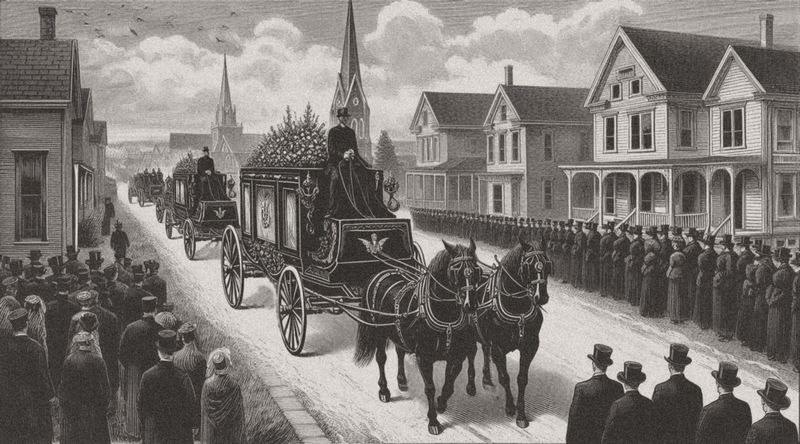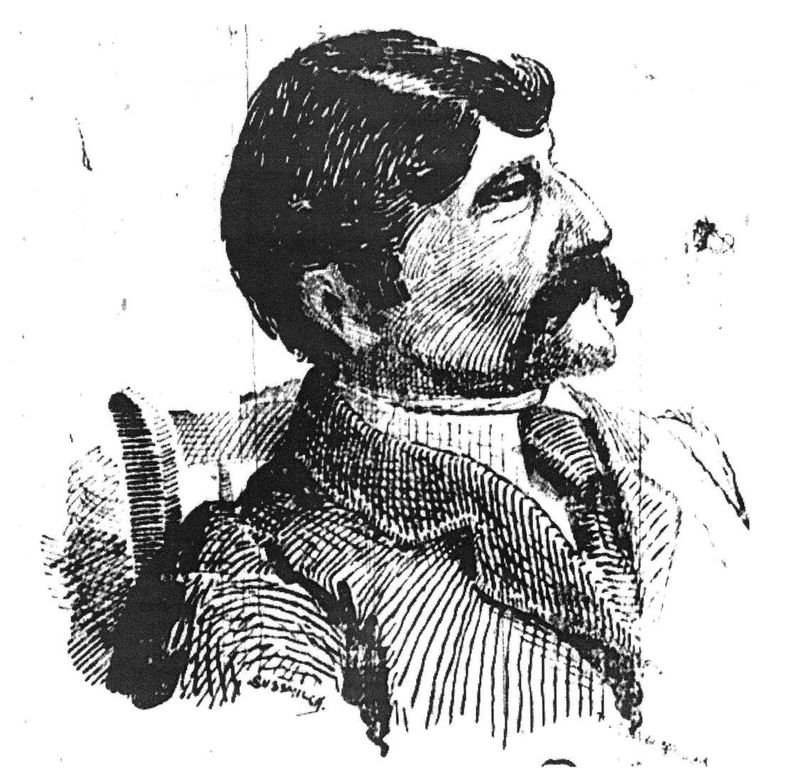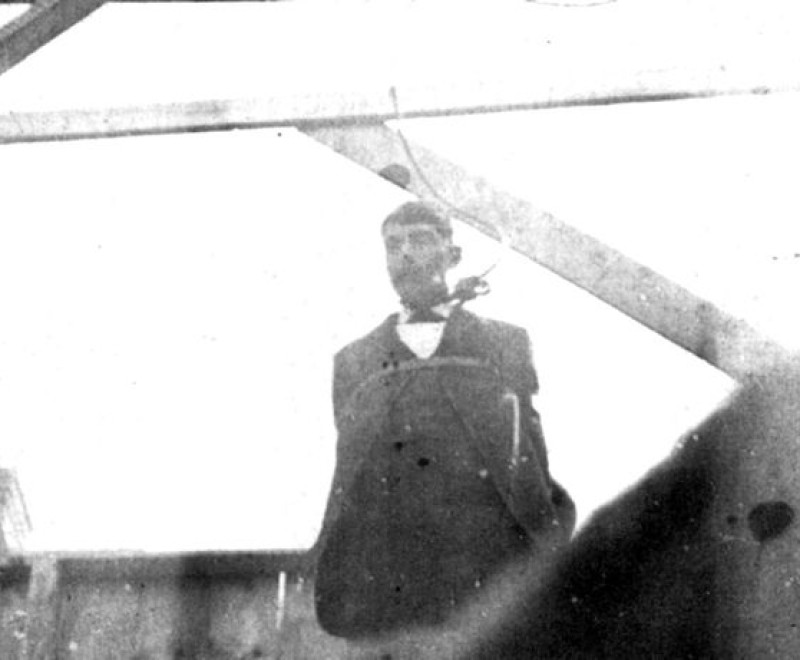The Hart Family Murders
Originally published in “Murder And Mayhem In Rockford, Illinois” by Kathi Kresol. Copyright © 2015 Kathi Kresol.
Bridget Hart held her extensive family of two girls and six boys together after the death of her beloved husband, John. That tragedy had taken place in 1891. The family lived on a farm outside Winnebago, Illinois on Wolf Grove Road, about six miles away from Rockford.
On September 5, 1893, around three o’clock in the afternoon, Bridget left her home to walk to the field to get some potatoes for dinner. When she left the house, her daughters, Nellie and Mary, were sitting in the front of house, one of them on a swing and the other in a chair. Her eldest child, named John after his father, who was about thirty-five years old, was in the barn. When Bridget returned a short time later, she came back to a very different scene than the peaceful one she had so recently left.
Bridget found her beloved daughter Mary lying face down on the steps of her house. She turned her over and noticed that Mary had blood running from her mouth and nose. Bridget screamed and started to look for her youngest daughter, Nellie.
She was shocked as she walked through the lower floor of the house. Bloody fingerprints on the doorways, blood smears on the walls and bloodstains on the carpet told a horrific tale. Bridget was becoming more frantic as she wandered from room to room with no sign of her youngest daughter. She rushed from the house to the barn, screaming Nellie’s name.
When she reached the basement in the barn, she beheld another horrendous sight. Nellie was staggering around the room, blood coming from her swollen nose and mouth. Bridget also noticed a green stain down the front of Nellie’s dress.
But Nellie was alive and conscious and able to tell her rescuer the unbelievable story. It was her own brother John who had forced her to drink Paris green from a cup. This chemical was found on most farms and was used as a pesticide during this period. It was deadly to humans if consumed because it contained arsenic. According to Nellie’s statement, John Hart had asked her to go out to the barn with him to assist with some task. When they reached the barn, John grabbed Nellie, forced her to drink green liquid from a cup and then shoved a gag into her mouth. She heard him leave the barn and then heard several gunshots; it was during this time that police surmised the killing of Mary took place. He shot Mary and then forced her to drink the Paris green. The blood stains found in the house indicate that Mary had gone inside and wandered through the rooms, perhaps looking for help. Finding no one, she returned outside and fell by the front steps of her home. It was obvious from her disheveled clothing and the blood found that Mary struggled with her attacker.
After John finished with Mary, he returned to the barn only to discover that Nellie was not yet dead. He then shot her once in the chest. One would not even want to imagine Nellie’s fear when she heard John’s footsteps as he returned to the barn.
Dr. W. Helm was called to do what he could for poor Nellie. While the doctor was caring for Nellie, her sister, Mary, was lifted onto a board and finally brought into the house. Three hours had passed since the attack. Mary was left in the front yard covered with a sheet under a lilac bush while word spread, and her neighbors came to stare.
It was only after they lifted her that the story turned more brutal. While they were shifting the board to make it through the doorway, something rolled off the board and hit the floor. It was a cartridge from a .32-caliber gun. Mary’s body was examined, and a gunshot wound was found in her neck. The gun was held so close to her that the flesh was burnt, and there was a hole burned in her dress. It was determined through autopsy that Mary had been forced to drink the Paris green and then shot four times at close range.
It was not until several hours later, when her brother William was helping Nellie change from her dress into her nightgown, that it was discovered that Nellie had also been shot.
By midnight, the doctor broke the news to Bridget that her youngest child would not recover. The Paris green she had been forced to drink had caused extensive damage to Nellie’s mouth and throat.
John Hart’s doctor was summoned and questioned by the police. Dr. Miller stated that he had treated Hart for physical problems but not for any mental problems.
The police also questioned the other family members. A brother, William, gave testimony to the relationship between the girls and John. He stated they quarreled “an awful lot.” He explained that these arguments were because John wanted the family to buy out his portion of the farm. His family refused. They wanted John to stay and help them make the farm a success. It would take all of their combined effort to make the farm work. William went on to say that John had an ugly, irritable disposition and seemed to especially hate the eldest sister, Mary.
Coroner Agesen was called to begin the inquest into Mary’s death. Her uncle, P. Hart, identified the twenty-six-year-old girl’s body. The uncle also told the coroner that John, Mary’s brother, had been ill lately and acting insane.
The search for John Hart began. A posse was formed, and people began to search all of the towns in the area. Hart was seen riding off with one of the horses from the barn. The search spread to Rockford. Around 9:00 p.m., Hart was spotted going into Henry Sparring’s Barber Shop on Kishwaukee Street in town. As the police approached him, John remained calm and slowly took a bottle from his pocket. He raised the bottle to his lips and took a long drink. Later, the contents of the bottle were found to be laudanum.
Nellie fought for her life, spending hours in agony, but she passed away around two o’clock in the afternoon the day after the shooting. She was only twenty-three years old.
The family’s troubles had started years earlier. John was considered the black sheep of the family. He had left twelve years before, and the scandal was that he ran off to Chicago with a married black woman. George Lewis and his wife lived in Pecatonica, and it was Mrs. Lewis whom John ran away with, causing the breakup of that family’s home. John and Mrs. Lewis allegedly lived together in Chicago before he deserted her and left for California. John roamed around the South and West while working a variety of jobs. He worked on the railroad in Colorado and Arkansas and traveled back and forth to Chicago several times.
The father of the family, John Hart, died two years before the shooting. He committed suicide by the drinking the same poison that killed his daughters, Paris green. It took a while for the family to find young John to notify him of his father’s death. He returned to the family farm about fourteen months before the murders. It was upon his return that he started to quarrel with the family about buying him out for his share of the estate worth around $50,000.
After being arrested for the attack on his sisters, John Hart was put into the jail in Rockford. A doctor treated him for the laudanum he drank. The opiate did not really threaten Hart’s life since he had ingested such a small amount. There was some chaos outside the jail on the first night of Hart’s incarceration. There was a band of men determined to string Hart up without a trial. But cooler heads prevailed, and the men decided to let justice run its course.
The Hart family was both well known and well respected. The girls were described as lovely and tall. They were always well dressed when they attended church services at St. Mary’s Catholic Church.
The newspaper also described how surreal the experience felt to the family. The sun continued to shine, the cows were in the field and all of nature continued on as if this terrible tragedy had never taken place. But the brothers left behind were in a daze, and their mother’s sobs were never-ending.
Mary and Nellie’s funerals were held together at St. Mary’s Church on Rockford’s west side. The crowd was huge; some estimates put it as high as two thousand people attending. The local newspapers stated, “The bright sunlight was eclipsed by the dark shadows of grief that spread over our city as the long funeral cortege, consisting of two somber-robed hearses and nearly one hundred carriages containing sympathetic mourners wended their melancholy way through Rockford’s streets on route to the Catholic Cemetery” People lined the streets all the way to the cemetery, not from curiosity but to show their support for the family going through this unbelievable tragedy.
When the crowd was passing the jail, some looked up and saw John Hart staring down at them. This enraged them, and a portion of the crowd went running to the jail in an attempt to bring Hart outside to lynch him. The police took the threat seriously and fell out in full force. They were able to quiet the crowd and convince them to continue on to the cemetery.
It was only a few days after the murders that John Hart started to talk to the press. He seemed almost compelled to try to convince reporters and others of his innocence. The story John first told to the reporters claimed that he was innocent and that it was the other five Hart brothers who killed the sisters and tried to poison him as well. Their motive was greed spurred on by the vast estate that their father left to the family.
Shortly after his arrest, Hart made his first appearance in court. People who witnessed him during the proceedings describe him as cold, calculating and showing no signs of remorse for this “heinous crime.” He again placed all the blame for his family’s woes squarely on to his brothers. “Hart seems to possess a bitter hatred against the living and dead members of Hart family except for his father and mother and the energy used in cursing them was intense.”
In mid-December, John continued his insane behavior, which included frothing at the mouth and growling while refusing to eat. Hart was put in shackles and moved to a smaller, and thought to be safer, cell. On December 16, while he was awaiting trial, John Hart tried to commit suicide by slashing his own throat with a piece of glass from the window. The newspapers said the only shame was that he not successful. That act, had it been successful, would save the county the cost of a trial.
The trial began on Monday, January 22, 1894, and lasted fourteen days. The verdict of guilty was issued on Monday, February 5. The trial was quite a spectacle. When the doors were opened on the first day, so many people surged forward that they ripped the wooden doors off their hinges. Estimates in the newspapers said that the crowd numbered eight hundred souls inside and out.
Attorneys Fisher and Garver were the defense attorneys, and they did all in their power to save John Hart from the gallows. State’s Attorney Frost was the prosecutor, and he was assisted by his partner, Robert G. McEvoy. There were eighty witnesses called, with fifty-nine by the state and nineteen by the defense.
Hart’s defense strategy was that he was ill, suffering from malaria and some sort of mental anguish. Just for good measure, he also testified that his sisters conspired against him and he suspected they had also tried to poison him.
The girls, of course, were not there to defend themselves against this charge. But the town’s people were sickened by this display. Quite a few did not return to the courtroom. Nellie’s deathbed testimony was allowed into evidence, and many called it “the death blow” for Hart.
Then Hart turned on the rest of the family. According to John, all of his siblings had conspired first against his father, killing him and making it look like a suicide. Then, when John came home to collect his rightful part of the inheritance, they decided to get rid of him as well. He proclaimed his innocence to all who would listen, and for good measure, John claimed that a buzzing in his head had told him to kill both of his sisters.
The newspapers all raved about State’s Attorney Frost’s cross-examination of the defendant. They commented on how easily Hart could be mixed up and that this fine attorney showed every claim for defense to be completely made up in order to allow Hart to get away with murder.
Frost was able to also undermine the testimony of a very “learned” doctor who claimed that even if John Hart was the cause of his sisters’ deaths, he had mental issues probably brought on by the syphilis that John suffered from. It was this disease that caused him to commit such a heinous crime.
Attorney Frost brought up all the points that showed that Hart had tried to escape his fate. He ran away after committing the crime, used an assumed name, claimed insanity from syphilis and malaria and claimed he had bought a gun to protect himself from highway robbers but at the same time claimed never to own a gun. Hart also claimed to be a laudanum addict but also stated he never took the medicine. He apparently forgot the small bottle of laudanum that was found on him at the time of his arrest.
The jury was out less than an hour before coming back with the guilty verdict. The paper described it: “A whole lifetime was crowded into that moment of suspense, and the next instant he heard the stern words that would send him from this world forever and end a life that has scattered bitter sorrow and dark despair in its pathway.”
Before the execution, a scaffold was built in the jail yard, and a stockade was built around it. The day before the execution, people came from all over to see the scaffold. John Hart could see the crowds through the bars in his cell. He talked bitterly about how sickening the people were who came with their morbid curiosity to view the instrument that would shepherd him to his death.
Seventy-five men were invited to watch the execution, but hundreds more pushed at the walls from the outside. Police officers were called to move the people back because the sheer mass of humanity threatened to knock down the stockade.
At 11:00 a.m., the south door to the jail opened, and John Hart walked the last few steps to where the executioner and the noose waited for him. Hart was dressed in a new suit that his brother William had brought for him the night before. The priest from St. Mary’s administered the last prayer, and then Sheriff Burbank led Hart to the trapdoor and offered him a chair. He refused, preferring to stand. The sheriff then asked Hart if he had any last words. “Upon the advice of my spiritual advisor, I have nothing to say.”
The noose was placed around his neck, straps were tied to his arms and legs and then his head was covered with a white shroud. “There was an instant’s pause, awful in its intensity. Then there was a dull grating sound, the death trap fell at 11:04 with a loud noise and the body of the murderer shot downward.”
The rope cut into Hart’s neck and turned the white shroud crimson with his blood. Thirteen minutes after the trapdoor was sprung, John Hart’s heart stopped beating. After his body was taken down and the shroud removed, it was found that the rope had nearly decapitated Hart.
Those outside the stockade knew immediately when the trapdoor was sprung. It was heard from over a block away. As further notification, there was a man at the top of the courthouse who signaled when the deed was done.
Undertaker Bradley cut down the body and took it to his undertaker rooms to prepare it for burial. Much was said and written about John Hart after his execution. People were astonished that someone so well read and so well spoken could commit such a heinous murder.
He was young, tall, good-looking and very intelligent. This was not what people thought of when they spoke of criminals. No one doubted that he had committed the crime, but the debate was all about the motive. It seemed inconceivable to everyone that Hart would commit such a crime and would possibly have gone on to kill more of his family, all for the inheritance left by his father.
Sources:
Chicago Daily Inter Ocean. “Mourners Become a Mob.” September 9, 1893.
________. “Slays His Sisters.” September 16, 1893.
Rockford (IL) Daily Register Gazette. “Hart Hanged.” March 16, 1894.
________. “John Hart’s Past Record.” September 16, 1893.
Rockford (IL) Morning Star. “A Batch of Crooked People.” October 10, 1893.
________. “Desperate Attempt to Break Jail.” November 1, 1893.
________. “Foul Murder.” September 6, 1893.
________. “Funeral for the Murdered Sisters.” September 9, 1893.
________. “Hart Declares War Against His Family.” September 11, 1893.
________. “The Murderer Attempts Suicide.” December 17, 1893.
________. “Proves to Be a Double Murder.” September 7, 1893.
Photo Credits:
Rockford Daily Register, Rockford, Illinois.
Midway Village Museum. Rockford, Illinois.
Copyright © 2015, 2025 Kathi Kresol, Haunted Rockford Events




